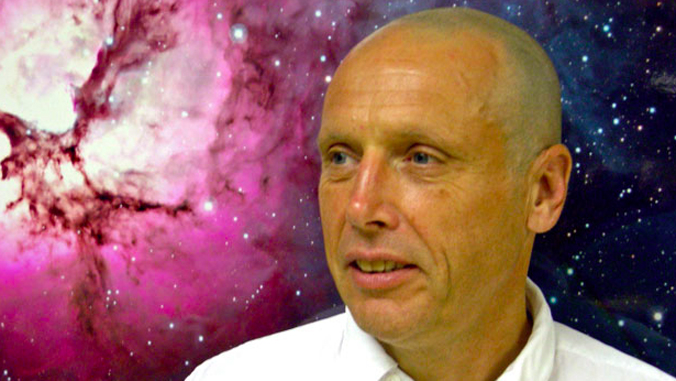
Long-time University of Hawaiʻi Institute for Astronomy (IfA) Astronomer Nick Kaiser died peacefully on June 13 at his home in Paris, at the age of 68. He was an astronomer at IfA for almost two decades, from 1998 to 2017. Kaiser’s seminal work impacted many fields within cosmology, and in recognition of his achievements he was made a Fellow of the Royal Society in 2008, won the Gold Medal of the Royal Astronomical Society in 2017 and the Gruber Prize for Astronomy in 2019.
Among his many contributions, Kaiser made the first calculation of the polarization of the cosmic microwave background in 1983, showing that the leftover radiation from the Big Bang is distorted slightly as it passes through density fluctuations, a prediction verified more than 20 years later. He made detailed calculations of the statistics of density peaks in the early Universe, which evolve into massive structures such as galaxy clusters, and explained how those clusters are distributed compared to all gravitating matter. He was the first to explain why the overall properties of these clusters do not follow the simple relations expected from basic models.
In one of his most important works, Kaiser and his graduate student Gordon Squires showed how to use maps of image distortions due to weak gravitational lensing to derive the underlying mass distribution that generates the lensing. Kaiser also pioneered the field of redshift-space distortions, where the individual motions of galaxies within their host clusters distort the appearance of three-dimensional maps of the universe when shown as a function of redshift rather than distance. Many modern sky surveys, including the upcoming Euclid space mission, rely on both weak lensing and redshift-space distortions to map out the overall distribution of mass in the universe.
The breadth and depth of Kaiser’s theoretical work in cosmology and his ability to tie it to observable phenomena was a very rare and special talent. His colleague Peter Coles described Kaiser’s insights, saying that, “He was often able to identify what were the fundamental aspects of apparently complicated phenomena and build simple models that captured most of the physics.”
Kaiser’s Pan-STARRS impact
Kaiser’s interest in the large-scale distribution of matter led him to propose the Panoramic Survey Telescope And Rapid Response System (Pan-STARRS) sky survey, for which he later became principal investigator. This survey, now running on two telescopes on Haleakalā, Maui, has produced the most downloaded public astronomy dataset, with the best-calibrated measurements of objects over nearly three-fourths of the sky. Pan-STARRS is also the world’s leading Near Earth Object (NEO) detection system, discovering over half of the larger NEOs (diameter > 140 meters), and continues operating today as a legacy of Kaiser’s pioneering vision.
“Nick Kaiser was a phenomenal scientist, and without Nick there would be no Pan-STARRS.”
—Ken Chambers
“Nick Kaiser was a phenomenal scientist, and without Nick there would be no Pan-STARRS,” said IfA Astronomer and Pan-STARRS Director Ken Chambers. “He saw everything with the eyes of a physicist. When there were difficulties with the practical problem of collimating the Pan-STARRS telescope he started from first principles and in a tour de force of fundamental physics developed a new approach—one that is now broadly used for such problems.”
Kaiser’s sudden death came as a shock to many astronomers, especially those in Hawaiʻi. During his time in Hawaiʻi, he began running marathons and then went on to compete in ultra-endurance events, often placing among the top competitors in his age bracket.
In addition to being a world-class astronomer, many friends and colleagues remember Kaiser as one of those rare brilliant people who interacted with others as equals. His long-time IfA colleague, Astronomer Brent Tully, noted that, “Thanks to his optimistic spirit, his energetic engagement and playfulness Nick had so many friends around the world who loved him.”

